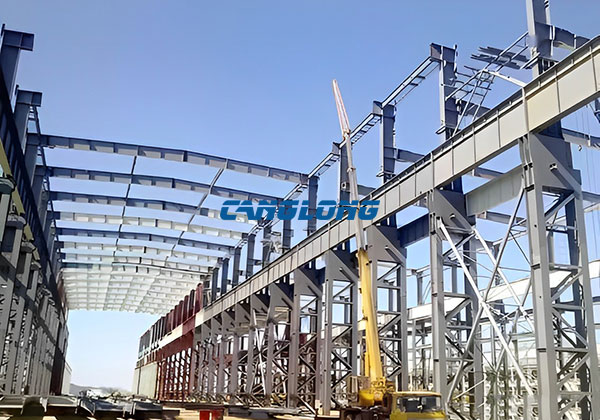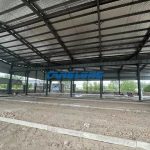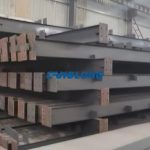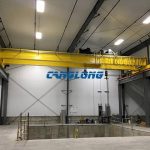How to install the crane beam of the steel structure workshop?
Steel Crane Beam Installation
- Lifting method: According to the weight of the crane girder of the steel structure workshop, the capacity of the crane, the construction conditions on site, and the requirements of the construction period, the best solution is selected according to local conditions.
- Before the roof is hoisted: a single crane or a double crane can be used for hoisting, using the pillar as a pulling rod to set up a pulley block, and the other end is lifted by a crane. In order to prevent the crane beam from touching the corbel, the end of the local method needs to be pulled out for a certain distance with a slippery rope. Only then can it be hoisted smoothly.
- After the roof is hoisted, the best solution is to use the end of the roof truss or the top of the column to tie the pulley block to lift the crane beam. This method must be determined by checking the tying position of the roof truss or the top of the column.
- Lifting point: Use tool-type lifting lugs for lifting, which is safe, reliable and convenient.

Correction: including elevation adjustment, vertical and horizontal axes (including straightness and gauge) and verticality.
1. Elevation adjustment: After one span or two rows of crane girders have been hoisted, use a level gauge (with an accuracy of ±3mm/km) on the girder or a specially erected platform to measure the height at both ends of each girder. All data were weighted average to calculate a standard value. Calculate the thickness of the backing plate required for each point, set the headspace of the jack at the end of the crane beam, and place wedge iron blocks at both ends of the beam.
Note: The height adjustment of the crane girder can be done before or after the roof is hoisted.
2. Correction of the vertical and horizontal axes: after the steel structure workshop columns are installed, the supports between the columns shall be installed in time to form a bent frame. First of all, use theodolite to draw the correct axis of the column base to the horizontal position of the top of the corbel at the end of the column column, determine the distance between the correct axis and the center line of the crane beam, and pull a long steel wire on the center line of the top surface of the crane beam. , adjusted in place one by one at the end of the beam. In order to facilitate the displacement adjustment, one end of the lower flange of the crane girder is a round hole, and the other end is an oval hole. Use a jack and a chain block to carry out the axial displacement, and then adjust and pad the iron wedge again.
3. Correction of the verticality of the crane girder: hang the hammer ball from the upper flange of the crane girder, and measure the horizontal distance from the wire rope to the top and bottom of the web. According to the inclination of the beam, the wedge iron block is adjusted again to be vertical. Vertical and horizontal axes and verticality can be performed simultaneously.
4. Correction time of horizontal axis and span: For small and medium-sized crane girders, because the crane girders are lighter, the correction work can be done before or after the roof is lifted. The correction time for heavy crane beams should be carried out after the roof is hoisted, so as to avoid the weight of the roof from elongating the lower chord of the roof truss, increasing the span of the roof truss, and the gauge will increase with the increase of the span of the roof truss.











